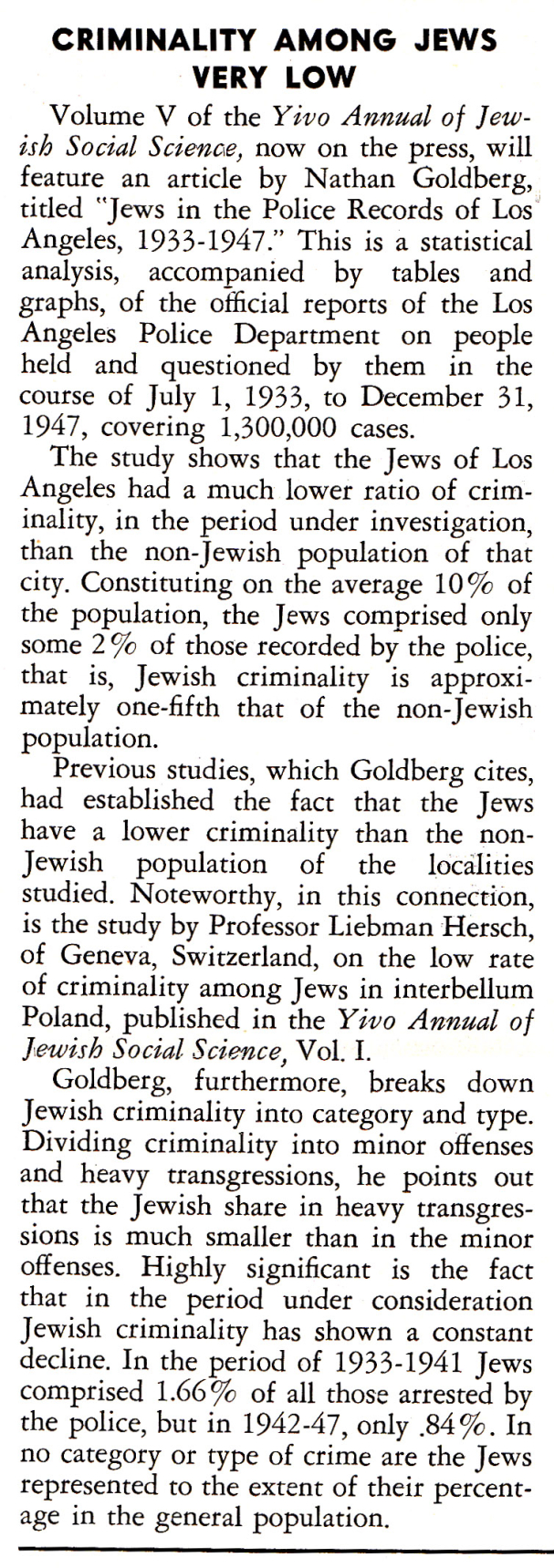From the Pages of Yedies
by ROBERTA NEWMAN
While there is plenty of Jewish anxiety these days about Jews associated with Wall Street scandals and financial scams (e.g., Bernard Madoff’s Ponzi scheme), attention paid to Jewish perpetrators of non-white-collar crimes is considerably less common. Not so, it seems, in September 1950, when this item, “Criminality Among Jews Very Low,” appeared in Yedies.
The readers of Yedies were only a couple of generations removed from a time when in the public mind there was a strong association of Jews with crime. In 1908, New York City Police Commissioner Theodore A. Bingham caused an uproar among Jews when he publicly blamed immigrant Jews for much of the city’s crime, singling them out, in particular, as “burglars, firebugs, pickpockets, and highway robbers.” [As quoted in Emerging Metropolis: New York Jews in the Age of Immigration, 1840-1920. See the interview with one of the book’s authors here.]
But by 1950, American Jews were no longer a community only of immigrants. There was a growing American-born second generation that was steadily leaving traditional immigrant enclaves for suburbs and burgeoning cities outside of the Northeast, such as Miami and Los Angeles, the subject of the study cited here.
This new generation might have been more secure in their identities as Americans than their parents and grandparents, but there was still plenty of cause to worry about how other Americans saw Jews. In the years immediately following the end of the war, polls indicated that antisemitism was far from uncommon. At the same time, a fierce battle raged in Congress over whether to allow greater numbers of Jewish Holocaust survivors to immigrate to the United States. Jewish organizations waged public relations campaigns designed to promote positive images of Jewish immigrants, as well as of American Jews, in general.
